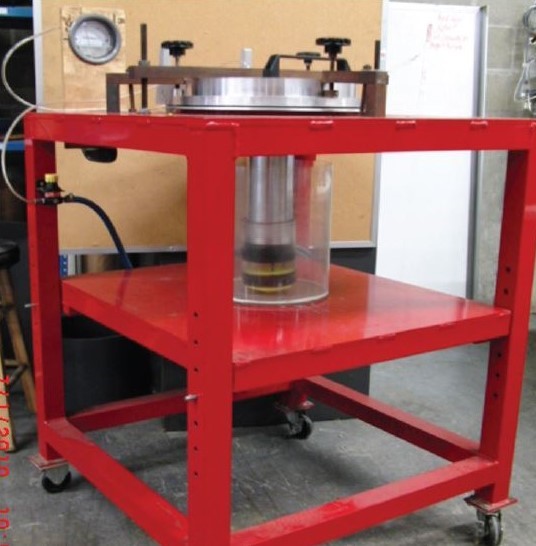The 2025 revision of the RD-1 document brings several meaningful updates aimed at improving clarity, practicality, and adaptability for users. Below, we’ll explore the most significant changes across various sections of the updated revision.
What is RD-1?
The RD-1 standard serves as a reference for professionals involved in the design, specification, or installation of retrofit roof drains, which are intended for use with existing drain plumbing on current roof structures. It does not address all roof stormwater drainage code requirements for specific building sites, as these are governed by local codes. Therefore, this standard should be applied alongside local code requirements and the manufacturer’s installation instructions for the particular retrofit roof drain being used.
Key Differences in Structure
One of the primary structural revisions involves the reorganization of the “Test Method.” Formerly embedded within Section 5, it now stands as its own section (Section 6). This change enhances formatting and readability, making it easier for users to locate and follow testing procedures. Additionally, minor grammatical edits and better organization have been incorporated throughout the document to improve overall clarity.
Evolution in Testing Requirements
A notable update in the 2025 RD-1 revision pertains to testing methods. While the 10-foot water column test remains a requirement, alternative testing setups have been introduced. These include options such as using air pressure in combination with water, supported by detailed diagrams for guidance. The introduction of the “hybrid” method provides a more practical testing approach for many setups, accommodating the diverse needs of different testing locations.
Flow Requirements Updates
The 2025 revision expands on flow requirement standards by recommending the ASPE/IAPMO/ANSI Z1034-2015 testing standard. This recommendation sits alongside references to the traditional formulas and historical standards for calculating flow capacities, thereby offering a more comprehensive framework. By contrast, the earlier 2019 edition was limited to addressing only traditional methodologies, making this expansion significant for future applications.
Enhanced Commentary
To address practical considerations not explicitly covered in earlier versions, the commentary section has been enriched in the 2025 revision. For example, the document now discusses specific design considerations for strainers in balcony and plaza drains, providing guidance for systems that deviate from the conventional rooftop drain applications. This enhancement makes the commentary more useful for real-world applications and broader use cases.
Refined Terminology
Precision in language is always important in technical documents, and the 2025 revision reflects careful attention to this. Terms have been revised for accuracy and relevance. For example, “roofing manufacturers” has been updated to “roof system manufacturers,” providing more precise references to industry roles.
Additional Points of Interest
The task force responsible for this revision gave thorough consideration to various nuanced aspects of the document, such as:
- The comparative use of air pressure versus water pressure in tests.
- Variability in test setups to accommodate different needs and environments.
- The utilization of the most relevant rainfall rate data for accurate measurements.
- Separation of design considerations and the backflow seal test standard into distinct documents, adding further organizational clarity.
Final Thoughts
The 2025 RD-1 revision represents a significant step forward by responding to user feedback and contemporary requirements. From structural improvements to the inclusion of new testing methodologies and practical enhancements, this update aims to make the document more accessible and applicable to industry professionals. With clarity and adaptability at its core, the revised RD-1 sets a stronger foundation for consistent and effective testing standards for retrofit drains.
The 2025 revision of the RD-1 document brings several meaningful updates aimed at improving clarity, practicality, and adaptability for users. Below, we’ll explore the most significant changes across various sections of the updated revision.
What is RD-1?
The RD-1 standard serves as a reference for professionals involved in the design, specification, or installation of retrofit roof drains, which are intended for use with existing drain plumbing on current roof structures. It does not address all roof stormwater drainage code requirements for specific building sites, as these are governed by local codes. Therefore, this standard should be applied alongside local code requirements and the manufacturer’s installation instructions for the particular retrofit roof drain being used.
Key Differences in Structure
One of the primary structural revisions involves the reorganization of the “Test Method.” Formerly embedded within Section 5, it now stands as its own section (Section 6). This change enhances formatting and readability, making it easier for users to locate and follow testing procedures. Additionally, minor grammatical edits and better organization have been incorporated throughout the document to improve overall clarity.
Evolution in Testing Requirements
A notable update in the 2025 RD-1 revision pertains to testing methods. While the 10-foot water column test remains a requirement, alternative testing setups have been introduced. These include options such as using air pressure in combination with water, supported by detailed diagrams for guidance. The introduction of the “hybrid” method provides a more practical testing approach for many setups, accommodating the diverse needs of different testing locations.
Flow Requirements Updates
The 2025 revision expands on flow requirement standards by recommending the ASPE/IAPMO/ANSI Z1034-2015 testing standard. This recommendation sits alongside references to the traditional formulas and historical standards for calculating flow capacities, thereby offering a more comprehensive framework. By contrast, the earlier 2019 edition was limited to addressing only traditional methodologies, making this expansion significant for future applications.
Enhanced Commentary
To address practical considerations not explicitly covered in earlier versions, the commentary section has been enriched in the 2025 revision. For example, the document now discusses specific design considerations for strainers in balcony and plaza drains, providing guidance for systems that deviate from the conventional rooftop drain applications. This enhancement makes the commentary more useful for real-world applications and broader use cases.
Refined Terminology
Precision in language is always important in technical documents, and the 2025 revision reflects careful attention to this. Terms have been revised for accuracy and relevance. For example, “roofing manufacturers” has been updated to “roof system manufacturers,” providing more precise references to industry roles.
Additional Points of Interest
The task force responsible for this revision gave thorough consideration to various nuanced aspects of the document, such as:
- The comparative use of air pressure versus water pressure in tests.
- Variability in test setups to accommodate different needs and environments.
- The utilization of the most relevant rainfall rate data for accurate measurements.
- Separation of design considerations and the backflow seal test standard into distinct documents, adding further organizational clarity.
Final Thoughts
The 2025 RD-1 revision represents a significant step forward by responding to user feedback and contemporary requirements. From structural improvements to the inclusion of new testing methodologies and practical enhancements, this update aims to make the document more accessible and applicable to industry professionals. With clarity and adaptability at its core, the revised RD-1 sets a stronger foundation for consistent and effective testing standards for retrofit drains.

